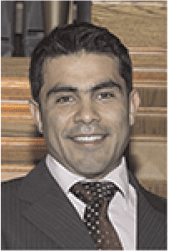New method of controlling excessive water production in wells using induced formation damage
Abbas Zeinijahromi A and Pavel Bedrikovetski AThe University of Adelaide.
The APPEA Journal 55(2) 485-485 https://doi.org/10.1071/AJ14120
Published: 2015
Abstract
Excessive water production is a major factor in reduced well productivity. This can result from water channelling from the water table to the well through natural fractures or faults, water breakthrough in high permeability zones, or water coning.
The use of foams or gels for controlling water production through high-permeable layers has been tested successfully in several field cases.
A large treatment volume, however, is required to block the water influx that generally involves high operational and material costs.
This extended abstract proposes a new cost-effective method of creating a low-permeable barrier against the produced water with induced formation damage. The method includes applying induced formation damage to block the water influx without hindering the oil production.
This can be achieved by injection of a small slug of fresh water into the water-producing layer. This results in release of in situ fines from the matrix, which can decrease permeability and create a local low-permeable barrier to the producing water.
In large-scale approximation, water injection with induced fines migration is analogous to polymer flooding. This analogy is used to model the fresh water with induced formation damage.
Sensitivity studies showed that the injection of 0.01 PVI of fresh water resulted in the blockage of the water-producing layer and an incremental recovery by 8% in field case A, with respect to the standard production scenario. The authors found that the incremental gas recovery with induced formation damage was sensitive to reservoir heterogeneity, permeability reduction and slug volume.

Abbas Zeinijahromi is a lecturer in petroleum engineering at the Australian School of Petroleum at the University of Adelaide, carrying out theoretical work, experimental studies and reservoir simulation of formation damage and IOR. He holds a PhD in Petroleum engineering from the University of Adelaide, an MSc in reservoir engineering and a BSc in production engineering. |

Pavel Bedrikovetski is author of two books in reservoir engineering and has published 150 technical papers in international journals and SPE. His research covers formation damage and IOR. He holds an MSc in applied mathematics, a PhD in fluid mechanics and a DSc in reservoir engineering from Moscow Oil-Gas Gubkin University. In 1991–94, he was a visiting professor at Delft University of Technology and at the Imperial College of Science and Technology. Since 1994, Pavel has been a Petrobras staff consultant. He holds the chair in Petroleum Engineering at the University of Adelaide. He has served as section chairman, short course instructor, key speaker and steering committee member at several SPE Conferences. He was 2008–09 SPE distinguished lecturer. |

Raymond (Ray) Johnson, Jr. is a principal at Unconventional Reservoir Solutions, adjunct associate professor at the University of Adelaide and adjunct fellow at the University of Queensland. He has a PhD in mining engineering, an MSc in petroleum engineering, a graduate diploma in information technology and a BA in chemistry. Ray has been active in the SPE, he is a past chair of the SPE Queensland Section, 2013 co-chair of the SPE Unconventional Reservoir Conference and Exhibition Asia Pacific and he will be the 2015 co-chair of the SPE Unconventional Reservoir Conference and Exhibition Asia Pacific. Member: SPE, PESA, SPWLA, ISRM, AusIMM. |
References
Bailey, B., Crabtree, M., Tyrie, J., Elphick, J., Kuchuk, F., Romano, C., and Roodhart, L. (2000). Water control. Oilfield Review 12, 30–51.Hernandez, J.C., Wojtanowicz, A.K., and White, C.D., 2006—Effect of anisotropy on water invasion in edge-water drive reservoirs. Paper PETSOC-2006-199 presented at the Canadian International Petroleum Conference, Calgary, Alberta, June 13–15.
Braedley, H.B., 1987—Petroleum Engineering Handbook: Society of Petroleum Engineers.
Bedrikovetsky, P., Zeinijahromi, A., Siqueira, F., Furtado, C., and de Souza, A. (2012). Particle detachment under velocity alternation during suspension transport in porous media. Transport in Porous Media 91, 173–97.
Khilar, K., and Fogler, H., 1998—Migrations of Fines in Porous Media. Dordrecht/London/Boston: Kluwer Academic Publishers. 173 pp.
Hussain, F., Zeinijahromi, A., Bedrikovetsky, P., Cinar, Y., Badalyan, A., and Carageorgos, T. (2013). An experimental study of improved oil recovery through fines assisted waterflooding. Journal of Petroleum Science and Engineering 109, 187–97.
Lever, A., and Dawe, R. (1984). Water-sensitivity and migration of fines in the Hopeman Sandstone. Journal of Petroleum Geology 7, 97–107.
Sarkar, A.K., and Sharma, M.M. (1990). Fines migration in two-phase flow. SPE Journal of Petroleum Technology 42, 646–52.
Hussain, F., Zeinijahromi, A., Bedrikovetsky, P., Cinar, Y., Badalyan, A., and Carageorgos, T. (2013). An experimental study of improved oil recovery through fines-assisted waterflooding. Journal of Petroleum Science and Engineering 109, 187–97.
Nguyen, T.K.P., Zeinijahromi, A., and Bedrikovetsky, P. (2013). Fines-migration-assisted improved as recovery during gas field depletion. Journal of Petroleum Science and Engineering 109, 26–37.
Zeinijahromi, A., Nguyen, T.K.P., and Bedrikovetsky, P. (2013). Mathematical model for fines-migration-assisted waterflooding with induced formation damage. SPE Journal 18, 518–33.
Khilar, K.C., Folger, H.S., and Ahluwalia, J.S. (1983). Sandstone Water Sensitivity: Existence of a Critical Rate of Salinity Decrease for Particle Capture. Chemical Engineering Science 38, 789–800.
Israelachvili, J. N. 1992—Intermolecular and surface forces. 2nd edn. Academic Press Ltd., London.


